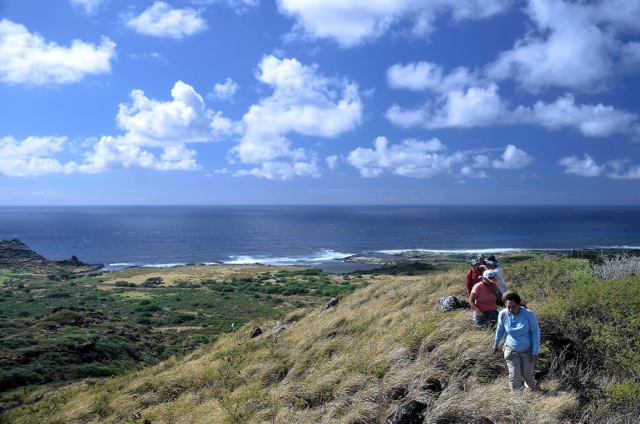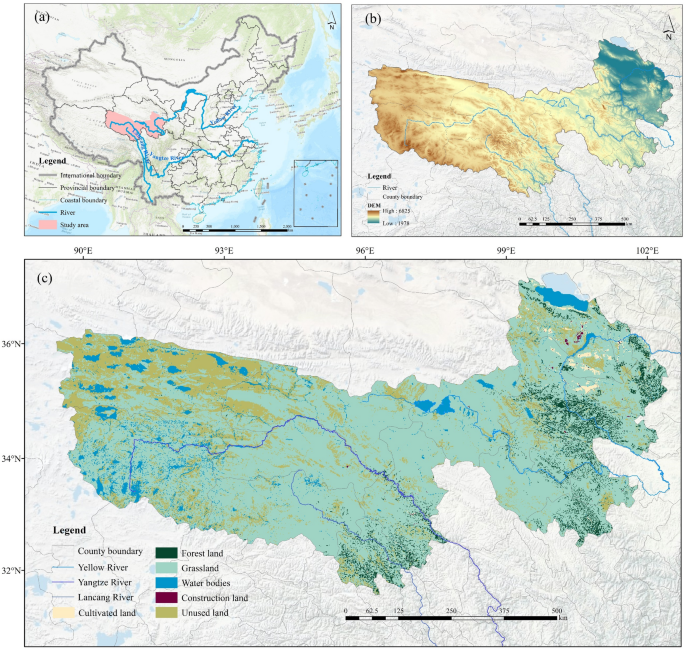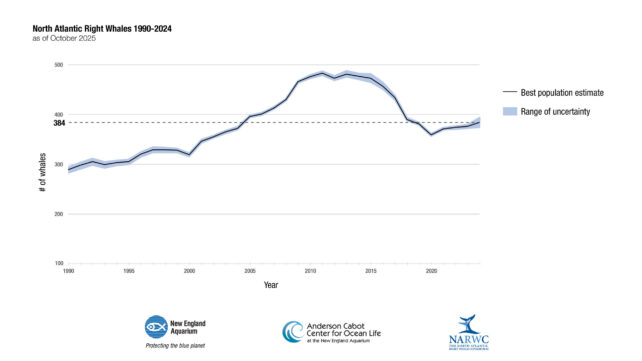The Millennium Seed Bank: A Global Initiative for Sustainable Development
Executive Summary: Operations and Strategic Importance
The Millennium Seed Bank, located at the Royal Botanic Gardens, Kew, serves as a critical global resource in the effort to achieve several Sustainable Development Goals (SDGs). Operating from a secure underground vault in Sussex, England, the facility is a safeguard against the extinction of wild plant species, directly contributing to the preservation of global biodiversity. Its operations are central to achieving long-term environmental and human well-being.
- Facility Capacity: The vault holds over 2.5 billion seeds from approximately 40,000 species.
- Preservation Method: Seeds are stored in sealed glass jars and foil packets at minus 20 degrees Celsius to ensure long-term viability.
- Mission Alignment: The seed bank functions as a secure archive of the world’s flora, providing an insurance policy against biodiversity loss and supporting global restoration efforts.
Advancing SDG 15: Life on Land
The core mission of the Millennium Seed Bank is directly aligned with SDG 15, which aims to protect, restore, and promote sustainable use of terrestrial ecosystems and halt biodiversity loss. With nearly half of all flowering plants at risk of extinction, the bank’s work is an urgent and necessary intervention.
Key Conservation Processes
- Field Collection: Seeds are gathered from wild plants globally through an extensive partnership network.
- Drying and Cleaning: Seeds undergo a slow drying process at 15% humidity to extend their lifespan by slowing decay. They are then manually cleaned to remove debris.
- Viability Testing: A germination test is conducted in a laboratory to confirm that the seeds are alive and viable before long-term storage.
- Secure Storage: Viable seeds are sealed and placed in the cold vault, where the low temperature and dryness can double a seed’s life for every 5-degree Celsius drop in temperature and 1% reduction in moisture.
Supporting SDG 2 (Zero Hunger) and SDG 13 (Climate Action)
The genetic resources preserved at the seed bank are fundamental to addressing other critical SDGs. The collection provides a vital resource for building a sustainable future resilient to environmental challenges.
- Contribution to SDG 2: As the global population is projected to grow by 2 billion by 2050, the genetic diversity stored within the seed bank is essential for developing crops that are resilient to disease, climate change, and other threats, thereby ensuring future food security.
- Contribution to SDG 13: The bank’s future strategy emphasizes using its collections to restore natural habitats. These restoration projects are crucial for combating climate change through carbon sequestration and helping ecosystems adapt to its impacts.
Fostering SDG 17: Partnerships for the Goals
The success of the Millennium Seed Bank is built on a foundation of global collaboration, embodying the principles of SDG 17. By working with international partners, the facility enhances global capacity for conservation.
- Global Network: The seed bank has established a partnership with 279 organizations in over 100 countries.
- Capacity Building: Kew has trained more than 3,000 scientists from 70 countries in advanced seed collection and storage techniques, empowering nations to build their own conservation capabilities.
Future Outlook and Strategic Initiatives
Marking its 25th anniversary, the Millennium Seed Bank is shifting its focus from collection to application. The next phase of its work will concentrate on utilizing the preserved seeds to actively restore ecosystems and address global environmental crises. To facilitate this mission, Kew has launched the £30 million ($40 million) Seeds Future Fund to support new research and expand its global partnerships, ensuring its continued role as a vital instrument for achieving a sustainable planet.
Analysis of the Millennium Seed Bank and its Connection to Sustainable Development Goals
1. Which SDGs are addressed or connected to the issues highlighted in the article?
- SDG 2: Zero Hunger – The article connects the conservation of genetic diversity to future food security needs.
- SDG 13: Climate Action – The article explicitly mentions that a future focus of the seed bank is to help combat climate change.
- SDG 15: Life on Land – This is the primary SDG addressed, focusing on halting biodiversity loss, protecting species from extinction, and restoring habitats.
- SDG 17: Partnerships for the Goals – The article details the global partnerships, knowledge sharing, and capacity-building efforts of the Millennium Seed Bank.
2. What specific targets under those SDGs can be identified based on the article’s content?
-
SDG 2: Zero Hunger
- Target 2.5: By 2020, maintain the genetic diversity of seeds, cultivated plants and farmed and domesticated animals and their related wild species, including through soundly managed and diversified seed and plant banks at the national, regional and international levels, and promote access to and fair and equitable sharing of benefits arising from the utilization of genetic resources and associated traditional knowledge, as internationally agreed.
Explanation: The article directly describes the Millennium Seed Bank as an international facility that holds “more than 2.5 billion wild plant seeds from around 40,000 species” to guard against extinction. It also highlights the growing need for these genetic resources as “the world is expected to have 2 billion more people by 2050 and new agricultural land runs out.”
- Target 2.5: By 2020, maintain the genetic diversity of seeds, cultivated plants and farmed and domesticated animals and their related wild species, including through soundly managed and diversified seed and plant banks at the national, regional and international levels, and promote access to and fair and equitable sharing of benefits arising from the utilization of genetic resources and associated traditional knowledge, as internationally agreed.
-
SDG 13: Climate Action
- Target 13.3: Improve education, awareness-raising and human and institutional capacity on climate change mitigation, adaptation, impact reduction and early warning.
Explanation: The article states that the seed bank’s work will “help combat biodiversity loss and climate change.” While the primary focus is biodiversity, the training of “more than 3,000 scientists from 70 countries in seed collection and storage” contributes to building institutional capacity to adapt to and mitigate the effects of climate change on flora.
- Target 13.3: Improve education, awareness-raising and human and institutional capacity on climate change mitigation, adaptation, impact reduction and early warning.
-
SDG 15: Life on Land
- Target 15.5: Take urgent and significant action to reduce the degradation of natural habitats, halt the loss of biodiversity and, by 2020, protect and prevent the extinction of threatened species.
Explanation: This is the core mission of the seed bank as described in the article. It is a vault “built to withstand fire, flooding, and any other disaster” to preserve seeds and “guard against extinction.” The article notes that “nearly half of all flowering plants believed to be at risk of extinction,” underscoring the urgency of this work. - Target 15.8: By 2020, introduce measures to prevent the introduction and significantly reduce the impact of invasive alien species on land and water ecosystems and control or eradicate the priority species.
Explanation: The article mentions that the seed bank’s collections have “supported projects to reintroduce native species and restore damaged habitats.” Reintroducing native species is a key strategy in strengthening ecosystems against the impact of invasive species.
- Target 15.5: Take urgent and significant action to reduce the degradation of natural habitats, halt the loss of biodiversity and, by 2020, protect and prevent the extinction of threatened species.
-
SDG 17: Partnerships for the Goals
- Target 17.6: Enhance North-South, South-South and triangular regional and international cooperation on and access to science, technology and innovation and enhance knowledge sharing on mutually agreed terms.
Explanation: The article describes the Millennium Seed Bank as a “global partnership with 279 organisations in more than 100 countries,” which exemplifies international cooperation and knowledge sharing in science and conservation. - Target 17.9: Enhance international support for implementing effective and targeted capacity-building in developing countries to support national plans to implement all the sustainable development goals.
Explanation: The article explicitly states that “Kew has also trained more than 3,000 scientists from 70 countries in seed collection and storage, helping partners build their own conservation capacity.” This is a direct example of targeted capacity-building.
- Target 17.6: Enhance North-South, South-South and triangular regional and international cooperation on and access to science, technology and innovation and enhance knowledge sharing on mutually agreed terms.
3. Are there any indicators mentioned or implied in the article that can be used to measure progress towards the identified targets?
-
For Target 2.5 and 15.5 (Maintaining genetic diversity and preventing extinction):
- Number of species conserved: The article states that the seed bank holds seeds from “around 40,000 species.”
- Number of seeds stored: The article mentions a total of “more than 2.5 billion wild plant seeds.”
-
For Target 17.6 (Enhancing global partnerships):
- Number of partner countries: The article specifies partnerships in “more than 100 countries.”
- Number of partner organizations: The article mentions a partnership with “279 organisations.”
-
For Target 17.9 (Capacity-building):
- Number of people trained: The article reports that Kew has “trained more than 3,000 scientists.”
- Number of countries involved in training: The scientists trained are from “70 countries.”
4. Summary Table of SDGs, Targets, and Indicators
| SDGs | Targets | Indicators |
|---|---|---|
| SDG 2: Zero Hunger | 2.5: Maintain the genetic diversity of seeds and wild species through international seed banks. | Number of plant species conserved (40,000). |
| SDG 13: Climate Action | 13.3: Improve education and institutional capacity on climate change mitigation and adaptation. | Number of scientists trained in conservation techniques (3,000 from 70 countries). |
| SDG 15: Life on Land | 15.5: Take urgent action to halt the loss of biodiversity and prevent the extinction of threatened species. | Number of species with seeds stored to guard against extinction (40,000). Number of individual seeds stored (2.5 billion). |
| SDG 17: Partnerships for the Goals | 17.6: Enhance international cooperation on science and technology. 17.9: Enhance international support for capacity-building in developing countries. |
Number of partner organizations (279). Number of partner countries (over 100). Number of scientists trained (3,000). |
Source: abcnews.go.com






